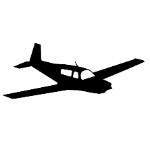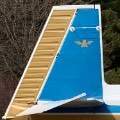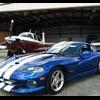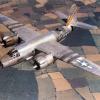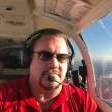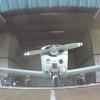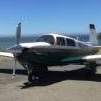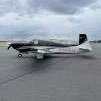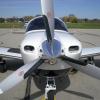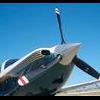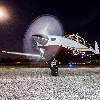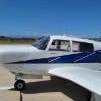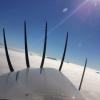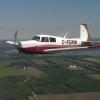Leaderboard
Popular Content
Showing content with the highest reputation on 12/17/2016 in all areas
-
My Ovation is "only" 17 years old, and it's already had a complete avionics change, the interior redone, a 3 blade prop, and a new engine (ahem) installed since it left Kerrville. Gold plating would have been cheaper.5 points
-
That's worth a hell of a lot more than $0.02. Many on this board can put an actually dollar cost to ignoring that advice.4 points
-
What vintage would that be? 2025? I agree wholeheartedly. My '78 was listed well north of $100K with original paint and an only moderately-updated interior. I was more interested in the recent Mattituck rebuild, Weep-No-More tank reseal and solid IFR WAAS (albeit not glass) panel. I asked for and got a sizable discount for the older paint even though the leading edges had been re-done so we ended up right at VREF (always negotiate). When the time is right I'll dress up the P&I to my liking; I'm giving strong consideration to gold plating. Sent from my iPad using Tapatalk3 points
-
No, Bravos and pretty sure the 231 line are not normalized. I would say the wastegate is not bypassing (other than to limit high boost) at lower altitudes. In taxi there is not enough airflow to spin the turbo to make boost. The correct answer to cool down is 2.5 minutes, split the difference of all opinions LOL Everyone gets to vote with their wallet......if it even matters3 points
-
I agree my F feels real vintage over a J. To the OP, there are a lot of older Mooneys that are in great shape and many that have been maintained better than later models. It all comes down to who owned them and the way they treated them. There are a number of C/D, E, F and Gs on this site that are equipped and maintained better than you can imagine and better than later models and years. Take your time and look for a plane that meets your need and budget. And don't get caught up in the glitter of the paint and interior. Look at the whole plane. It doesn't take long to know the difference between window dressing and a plane that has been really cared for. Sent from my iPad using Tapatalk3 points
-
Jay, How tall are you? This will tell how much leg room is in the back seat. The difference between the E and the J is 10" split between the backseat and luggage area. Both the E and J will carry the same load. Any concerns about an old airframe, corrosion, etc is handled by a proper pre-buy inspection. You can buy a J lemon just as easily as you can buy an E lemon. Which is the better investment is probably up for debate. The newer the airplane the larger the market, but also the more room for depreciation. The older the airplane the more likely all the depreciation is already been paid out. Example, I bought, flew 400 hours and sold a 1964 C for $2K more than I bought it. An E will all the speed mods and a two blade prop will keep up with any J out there. You said $90K is the max budget, no more. That will buy more E than it will J. Then the question is... is a low end J more desirable than a high end E? Not for me, I'm the owner and therefore don't ever ride in the back seat ;-)3 points
-
Just think of all the old 150 Cessnas at flight schools that could have benefited from those engines and the Garmins what stupid accountant / manager made that choice3 points
-
I wasn't a math major but dividing TSMO by years SMO I come up with ~43 hours per year. By my standards that's not a lot of flying. IMO you should buy the "most complete" plane you can get for your budget including reserves. E, F, J; all great planes. FWIW I partnered in a solid E for a year but fell in love with the J. I wouldn't sweat any perceived/anticipated speed difference 'cause it's not much if any. But there are differences. I use/need the added baggage room and appreciate the added vertical stability of the medium-body airframe. My back seat is frequently occupied by our 95# pooch so I can't put bags there. Engine cooling is superior on the J, and I personally prefer the electric gear and flaps (though many here are devout about the manual systems). My wife, pooch, and I can stuff the baggage compartment to the ceiling, fill the stock tanks and fly 6 hours non-stop (900 nm) with an hour fuel reserve. I'm hoping to keep this plane another 25 years or so. Sent from my iPad using Tapatalk3 points
-
The weather here sucks today. Was trying to meet up with others for some formation practice. Instead I settled for starting an oil change which meant making a short flight to warm up the oil/engine prior to draining. Ceiling 1,700 agl. Winds 30 degrees cross at 22/gusting 30, perfect conditions for honing one's skills. Gotta love touching down at 35 mph groundspeed! I just couldn't stand the thought of my baby sitting there for 12 days over the holiday with dirty (38 hour) oil in the engine. Gotta keep the rust monster at bay. Sent from my iPad using Tapatalk2 points
-
Compared to taking that $35K to the Chevy dealer it's quite exciting. -Robert2 points
-
No matter which magnetic compass you use... ANDS is still going to be part of the math... The vertical compass is an ordinary magnetic compass with a gear driven vertical card... My 65C had huge interference problems caused by the magnetic shadow of the center tube. The balancing balls would be a probable solution for that as well... Later planes got a SS tube in that location... The nice part about the vertical card is the direction of the card matches the direction of the turn. This makes the ANDS a bit easier to deal with... PP thoughts, only. I could be completely out to lunch on this... Best regards, -a-2 points
-
and $35k would just get you a "Just Okay" plane. Nothing to get excited about. -Tom2 points
-
David, you did a great job explaining how this gets done in the commercial world. Thanks! I like small amounts of turbulence. It makes you feel like the airplane is really doing its job supporting you. Best regards, -a-2 points
-
True, but they made the E until 73/74..The key would be finding the "right" E.2 points
-
Also it would be good to know where the thermocouple are located on the engine.2 points
-
What's a book? I see the used market driven more by the decline of people in the market than the decline of available supply. You are quite right about less available good used airplanes but if no one is interested in flying there is no market. The opposite of this is in the vintage car world. There are millions of people the can drive a car and a well preserved or restored pony car from the 60's can fetch over a hundred thousand. Sadly those 162's were destroyed by an F,ing accountant. I sometimes wonder how much the remaining manufacturing base really cares about promoting the small GA market and pilot base. When was the last time you saw a Cessna Beach Piper Mooney or Cirrus add on a non aviation format event commercial. There are lots of things we as pilots do to expose people to the passion for flying but nothing is being done by the industry outside of there own little church. I would love to see a commercial on TV during any kind of broadcast promoting GA and any brand of airplane. And sadly virtual reality keeps getting better and kids really are growing up in a different world. What's really going to be an eye opener is when the airlines can't find any pilots to fly the jets that everyone takes for granted. Of course with AI getting smarter we might end up with pilotless airliners. That's a scary thought and not too far away.2 points
-
After all this discussion... Do we agree 1) the problem is oil degrading in the turbo? 2) oil degrades with a combination of time and temperature? 3) temperature (heat energy) is supplied by the Ship's collected EGT( three into one), TIT (six into one), Turbine blades are next hottest, turbo body is then a bit cooler, oil channels with flowing oil are the coolest part.... 4) the oil temp entering the turbo's oil channels is the engine oilT. 5) the oil temp leaving the turbo is unknown without instrumentation. 6) The average time for the oil to leave the turbo oil channels is dependent on engine rpm and oilP. Oil viscosity will also effect this number... 7) the hot side of the turbo's body is glowing red. This indicates 500+°F. The inside surface of the turbo will be pretty close to the TIT. 8) oils typically break down when left over 375°F (inexact fuzzy memory) for a period of time. 9) Descending from the flight levels at reduced MP with good air flow is great for cooling. 10) taxiing around is done without a lot of cooling, but it is also done without a lot of heating as well. 11) if the cooling isn't done by the descent, it would have to come from somewhere else...? 12) unfortunately, cooling of this important chunk of metal, oil channels, and bearings is unique to each machine. Even if they are using the exact same oil. The collective experience is spectacular. But, the need for the cooling off after landing is both machine and operation dependent. Flying a group of paratroopers to 12,500', flying a mooney, and stop and go traffic in a turbo diesel are going to be different enough to make the comparison un-usable without the actual data. 13) an oilT thermocouple at the exit of the turbo charger, close to the bearings would tell a lot about what is going on. Measure the oil's temp as it leaves the hottest part of the oil flow's channel. 14) APS is great about doing research. they don't usually publish it for free distribution. Much of their published work is done on two Continental engines. It would be important to know how closely a pair of turbo-normalizers mounted on a TNIO550 (in a lab) represents all the turbocharged Moonies in the fleet when using their data.... 15) similarly, oil degrades in the channels of the exhaust valve guides in O360s. The best way to avoid this problem is to have actual data. CHT on all four cylinders is enough to maintain control over this situation. Not having any CHT data to review is a problem waiting to befall the lower budgeted pilot. 16) once oil begins to degrade, it is a self catalyzing challenge. The flow channels start to constrict as carbon begins to deposit itself and block more flow...increasing the residence time, and reducing the streamlined flow, in the hot channel... 17) burnt oil is bad, hot turbos can cook oil, get the turbo cooled during descent (according to APS)...cooling in the descent is better than cooling on the ground. 18) engine oil is used to cool exhaust valves and turbo bearings. If the oil flow stops while these devices are still hot the oil will degrade... 19) In aviation, we have used calculations to define things we can't often easily measure. FF, FL, time, gallons, and distance to the airport... over the years we have added much better instrumentation to avoid less accurate calculations... 20) I would bet... a well placed (as Defined by APS) thermocouple couple would tell a lot about the effectiveness of our cooling procedure in our machines. 21) by measuring the oil pressure drop from the entrance to the exit of the turbocharger, the pilot could determine the oil flow through there as well... This is a bit over the top, but somebody mentioned their engineering degree. Go ChEs! This is all off the top of my head, after reading the thread once through. Let me know if I missed something. I'll be back much later... Best regards, -a-2 points
-
In 1991/92 when getting my instrument rating I was paying abut $45 / hour for a C172 and my car cost about $9000. Today, at the local flight school, a 172 is about $140/ hour and my car is about $28,000. Inflation seems to have affected both about the same, at about 3x the price of the early 90's. (100LL is about 4.5x the 1992 price). I bought my first Mooney in 1992 for $24,500. I bought my current Mooney (same type) in 2011 for $37,500. I got a good deal on both. So, on balance, aviation has NOT gotten more expensive, and used airplanes are more affordable. It is true that I can't speak for the high college debt problem, but that was a factor in my day as well. (As for me, I worked my ass off to get the government to pay for my college then gave them 10 years service as my thanks.)2 points
-
I'm 6'3' and the J was a no-brainer. I aimed high and got the IFR panel I wanted and everything else, new interior, good paint, top prop, young motor. No regrets!!! Whether it is and C, D, E, F, G or J, get the best airplane you can afford. They are all Mooneys and they all rock. Don't buy a "bargain" that needs upgrades. Pay a little more up front. Just my two cents.2 points
-
My "J" was originally purchased in only their 2nd year of production (1978). Still it's 14 years newer than the "E" I partnered in. Over its 38 year life it flew an average of 79 hours per year. Now at ~3,000 TTAF I feel confident that the structure remains sound. I'm not saying there aren't some incredible "vintage" planes but to me the J just feels more modern. Simple emotion likely has something to do with that. Sent from my iPad using Tapatalk2 points
-
I guess it all comes down to mission and budget the real good news is all the Mooney models are really great airplanes. My wife and I can carry a third full size adult male with full fuel and full bags and fly out of a 1400 ft elevation 3500 ft runway that is surrounded by hills (you east coast guys call them mountains) and get 500 fpm at 120mph on a 100 degree day with180 hp and cover 600 statute miles in under 4 hours with an hours reserve. And that's with the lowest rung of the Mooney ladder2 points
-
Sure, this is likely true. So if you get on the ground at full throttle, you ought to let it cool down. What they are missing is that we start retarding the throttle during or at the start of descent, and by the time we touch down, it has already cooled as far as it is going to, and taxiing around with decreased air flow actually heats it back up. At least this is what APS actual data shows.2 points
-
I appreciate all of this. I am considering $90k as in the initial investment in to the airplane. price per year is a whole different topic that is not a major concern to me, i have budgeted this on the extreme side. Like someone said before... We don't own an airplane because its a smart place to put your money, we do it because we want an airplane.. hehehe... I love all the info and input from everyone. I feel like the majority of you have helped me consider an E and fix her up the way I want it. I'm certainly excited and when I get her home ill snap some photos and keep you guys up to date. A again thanks guys for the input. I love mooney space.2 points
-
Unless the price of ADS-B equipment and the cost to install comes down by 1/2, I foresee widespread non-compliance in the GA community. Particularly in less congested areas. Personally, I do not fly in Class B airspace, and see no problem with utilizing airports outside of Class B airspace, and driving to where I need to go. Furthermore, I believe permission will be easy to obtain to operate in Class C aircspace without ADS-B, so maybe no issue there, and I rarely fly above 10,000 ft. Therefore, in my case, ADS-B compliance provides little additional capability to my airplane, but does add significant potential for missed flights. If ADS-B is installed it MUST be on and operational at all times the aircraft is operated regardless of airspace or mode of operation. ADS-B out becomes a no-go item and a potential for missed flights. Long tunnel, no cheese.2 points
-
I'm flying American right now posting, it sucks sitting in these killer seats, even first class sucks, Mooneys anytime over this crappy can, 30 minutes of 'this miserable flight left. Five hours in my Mooney is 1000% better than this.2 points
-
Power of Mooneyspace. Within 10 minutes of posting I have a used one on the way for a great deal!!2 points
-
That's the whole point if someone can afford a nice plane at 50 grand that would leave 40 thousand for all things that are expected with ownership I would hardly call that wincing I would call that smart planning. On the other hand spending all your reserves on a plane at the high point of budget would be foolish. I find it interesting sometimes when folks seem to think only the very well off should be allowed to own an airplane. I could have financed mine but I chose not to put myself into debt for a non essential hobby might be different if I could write if off as a business expense. I accept the financial risk and potential loss should my plane ever be unfit to fly. And if I were ever deemed unfit then I would sell for what I could get and look at it as a great experience to have had the privilege to have flown. My airplane is mine it answers to me and me alone. I wish the OP good luck in his search2 points
-
In the end, after 10 years of ownership, the price of the plane minus what you sell it for will be dwarfed by other expenses such as: upgrades, hangar, avgas, insurance and maintenance. If you are wincing about an extra $40K for a J, you might want to rethink ownership, do not, I repeat do NOT buy a plane without substantial cash reserves for unexpected maintenance.2 points
-
To re-enforce Greg's point. Aircraft without ADS-B OUT and also not in radar coverage will not show up in ADS-B IN traffic displays. When does this condition most like occur? When you/they are in the traffic pattern at an uncontrolled airport below radar coverage and below ADS-B reception.2 points
-
Without active traffic you'll be relying on uplink for non ADSB (mode c) traffic. To my mind where this matters is in the traffic pattern. You're where most mid airs occur and are often below the radar that would be required to detect and uplink to you those transponder targets. That's assuming you're even receiving ADSB in at 1000agl. So I personally think active traffic fills some important gaps, and I've installed the 9000+ myself... Love it. Sent from my iPhone using Tapatalk2 points
-
99% of us don't need an airplane. It boils down to how much you can talk yourself (and/or your better half) into spending for what you want.2 points
-
I feel your pain. When I bought my E I really liked it, but had concern over the first couple of years whether the short body was going to work for me and what I had hoped would also be used with family of four adults. Well, I'm now into year 6 with the E and I think I can count on one hand how many times I have had four adults in for any measurable distance. I guess what I'm getting to is all the opportunities that I thought we would fly as a family of four adults ended up not being near the amount I originally thought. In the first few years I was really worried, would the E end up being too small for all of us to enjoy?, I even posted it for sale on MS at year two or three of ownership thinking a J would allow for more opportunity of family flying..I ended up rethinking and not selling. So here I am and after nearly six years of ownership in my E I'm still counting on one hand roughly how many times we flew as four adults onboard. A few of us short body guys have gone over the top, but for $90K you would have a very well equiped E. Put another $40K+ in and you will never look back if your only hesitation is the leg room, you will probably find it unnecessary. My only addiction is performance..I would step up to a Missile or Rocket just because I'm a performance junky and like the idea of speed, but to trade up just for more room, well I'll keep showing love for my E and consider any missed extra leg room for four adults has having been a non-issue and probably won't be in the future. The last picture is what it looked like when I first got her.. Pea Green, right out of the 70s. Good luck..Any Mooney is a great decision -Tom2 points
-
The guys at GAMI have a much better test facility than Hartzell does and have thoroughly debunked this practice. They actually attached temp probes to the various bearings in the turbo charger its self. They confirmed that the bearings were coolest right at touchdown. They start to warm up during taxi, and while you are sitting there on the ramp idling, they're getting even hotter. So you're actually doing your turbo a disservice by following this practice.2 points
-
I'm happy to recommend these folks to Mooney owners in the Carolinas the Southeast. AGL Aviation Services, my home field shop, became a Mooney Service Center during 2016. They're based @ Foothills Regional Airport, KMRN, a fine all weather field with a 5500' runway. Lynn and Tamara Mace would really like to have enough Mooney business to keep them busy taking care of our superior planes even as they expand their shop hangar space and add to their staff. The 10% discount is off an already reasonable rate reflecting our semi-rural location. From their website: !!!PROMOTION!!! It's the time for everyone to be preparing for a Merry Christmas and a Happy New Year! Resolution jars are being dusted off and prepared for it's epic reemergence into our changing 2017! A lot of things happened for us in 2016 like becoming a CubCrafters and Mooney Service Center! We are particularly proud of those two accomplishments. In the Christmas spirit and in the spirit of new beginnings AGL Aviation will be offering a YEAR LONG promotion starting Jan 1 2017 for our Mooney and CubCrafters customers (present and future)! ANY Mooney or CubCrafters customer that comes to us as a referral will receive 10% off their labor costs FOR WORK DURING THE ENTIRE YEAR! Drop the name of the customer who referred you and they will also receive 10% off their labor costs FOR WORK DURING THE ENTIRE YEAR! You have to mention this directly to us in order to take advantage of this promotion. This is too good to pass up! All of our customers hold a special place in our hearts - May your holiday season be merry and bright! http://www.aglaviation.com/1 point
-
That is why many consider the 252 or Encore to be the best...great combo of speed and efficiency. The -540 &-550 powered birds are faster, but the bigger engines require more weight and more fuel to be carried and quickly you spiral away from the previous efficiency of the mid-body versions. Sent from my VS985 4G using Tapatalk1 point
-
1 point
-
Not quite as simple as it sounds. You could measure the temperature and flow of the oil going into the turbo, but what comes out is a mixture of oil, inlet air and exhaust gas in unknown proportions. The turbos in the 231 and RaJay conversions use a scavenge pump. This is a positive displacement pump that pumps approximately twice the volume of oil going into the turbo. The rest is made up of inlet air and exhaust gas which is pulled past the seals and just vacuum cavitation. The oil leaving the turbo looks a bit foamy. The volume of inlet air and exhaust gas is small, but it is there. I was just looking around the web and found timers for race cars hooked to an electric oil pump that pumps oil through the turbo for 5 min after engine shutdown. Their problem was drag racers doing a run and immediately shutting down the engine. Going from 150% power to 0% instantly is hard on the turbo. That is not what we do...1 point
-
Ron, Likewise sorry if I'm coming across rude or too strong. I don't mean to offend either. You'll really like the APS course. I only wish I'd taken it sooner. And I'll likely go back and audit the course a second time. There is so much information, and mountains of data, so that a weekend is hardly enough time to absorb it all. We do have a very thick binder of material that we take away from the course and much of the data is there. I wouldn't want to even try to teach the course anywhere, much less here on this forum. But even if I tried, the books are at home and I'm in Buenos Aries on my way to Antarctica for Christmas. In the APS course, the instructors directly address the claims of Hartzell and Mike Bush. They mention that Mike Bush has attended their course three times and they are all good friends and respect each other. But Mike doesn't have any data to go on except for maintenance records of planes his company work on and his own experience with his personal twin cessna. APS on the other hand has built the measuring equipment. They will show it to you. You will spend time in their test cell watching the equipment work. APS doesn't ask anyone to believe them because they know better. They show exactly how they measure, how they test, and what experiments they run. Then they give you all the data so you can see for yourself. It's really an amazing experience. To finally respond to carqwick (apple keeps wanting to spell check this to carsick). There is APS data on this. Everyone on this board who has spent the money to take their course agrees with this and was convinced by it. The math checks out. But you'll likely have to take the course to get the data for yourself. Cheers, Paul1 point
-
Turtle, I just had one put in my bird. There is a chance that you might need compensating balls which would add to the cost. Mine barely passed when they did the compass swing and didn't need the balls. I like it, it's like a mini DG and I think would be a better back up in the soup if the DG failed. Here's a bad pic but if you zoom in you can see it has the same mount as Marauder posted.1 point
-
my take is slightly different............how often will you have ANYONE in the backseat for ANY amount of time. if that is 'often', then J. I often fly 2 pax in cherokees (140/180) and if it's anyone other than a lil girl they are stretching across the back seat to try to find a way to be comfortable (not nearly as bad in an archer). mooneys might be a little different due to the need for at least the left seat to pull their seat pretty far up. otherwise, my limited experience flying in DrBill's E, there's usually enough room in the backseat for the dog we're flying a PnP mission for. personally, I know I don't NEED more than an E. also, most E's are in my price range. but so far I do fly 2 pax regularly, and I want my last plane first, hence I really really really want a J. just can't afford a good one lol. I should be getting exposure to an F in the near future. pretty weak panel but it's in my range and at least I'll see if the extra room is all it's cracked up to be.1 point
-
I swing by the A&P school at times to borrow tools, etc. There are certainly lots of younger folks there but I don't see them turning up in the shops either. It may be that working on GA planes doesn't pay the bills and they end up in the jet jock shops. More reason for a GA A&P program. -Robert1 point
-
1 point
-
I think it's interesting that all of the voices against the research done by APS are based on "probably", "I think", "in my opinion", and "I don't know". This is exactly the point of the RESEARCH done in Ada, OK by the guys at GAMI and APS. They specialize in debunking old wives tales, and random made up and passed down theories with good old fashioned science and math. Obviously everyone agrees that turbo bearings are the issue. APS spent quite a bit of time and effort working out a way to actually measure the temperature of the turbo bearings. Then they had to find a way to do the measurements in flight on a working airplane. With this done, it's time to look at the math. The results show unequivocally that letting the engine run for 5 minutes after parking, to let the "turbo cool down", actually hurts the turbo bearings more than shutting down immediately upon reaching a full stop. I know science, math, and even facts are kinda out of fashion right now, but for us engineer types, facts still matter, science is the way to find facts, and math is the exact science. But don't take our word for it. Sign up and go to Ada, OK and see for yourself. It might be the best $1 AMU you'll spend on your airplane.1 point
-
Take a millennial flying...either they like it or they don't. Need to sell them on posting their experience to Facebook...and flying gives the options to post neat trips so they can impress their FB "friends."1 point
-
Thanks Anthony for the offer. When I did this 2 years ago we were in a hurry to get south ASAP... might be worse this year. I'll get in touch if we can do this. Regards, Yves1 point
-
I sent an email to the address mentioned and haven't gotten a response yet. my guess is they are putting the info together. but really no one else should inquire until I'm done1 point
-
Richard, I hope you enjoy the plane as much as we all did for all these years. I attached a picture I just found from when my brother in law first got it......before he was even my brother in law. Note the date. (I'm also NOT the sharply dressed guy in the Christmas sweatpants!!) Last thing I forget to mention. I always liked the unique N number but there are very few controllers anywhere who get it right. Put a pause in there, Mooney 788...78, and they always get it. Happy Flying!!1 point
-
I do owner assist annuals. I have accumulated almost all the tools and supplies needed including jacks and tail weight, 5 hp air compressor, kerosene heater. I have quite a lot of experience taking apart everything need for the inspection. Jacking the plane, removing seats, cowling,, inspection plates, wheels, spark plugs, draining oil, removing the oil filter, cleaning the wheel wells and belly, lubing the heim bearings, removing the battery, topping the hydraulic reservoir, and a few more prep tasks I'm leaving out is a pretty full day (4-6 hours, I'm old and I have a life away from the airport). And I'll reverse all those steps after the actual inspection, measuring, adjusting, bearing repacking... is done by Lynn with me playing dental assistant, fetching mirrors, magnets, assorted wrenches, salves and potions. At this point we might find we need a part or two that needs replacing that neither of us has in stock. I might be told I can button up some of the dismantling. After the parts are secured and installed I can add oil, filter, do safety wiring and put the plane back together. Lynn checks the ELT battery date, the AD and SB history (at this point there are zero or very few that apply to a '66E) and logs the work. We've done it in 3 days when I had a trip planned but usually I take closer to 2 weeks. If we punched a clock i/o I'd only log 25-30 hours on task of which <10 are Lynn's. This year we'll replace the JBar block which is original. I want to remove and straighten a gear door, may need painting. do some other touch up painting. I would estimate that the money I save more than pays for the difference in hangar cost for my private T hangar vs. being in one of the community hangars.1 point
-
One thing I've learn while getting old is that there are not enough people who have real knowledge and experience and who also are willing to get their hands dirty. When you find one it is a very good idea to appreciate him/her. I have a local A&P/IA, a plumber, a welder, an electrician, an upholsterer, a seamstress... all of whom do not charge enough for what their expertise is really worth,1 point

